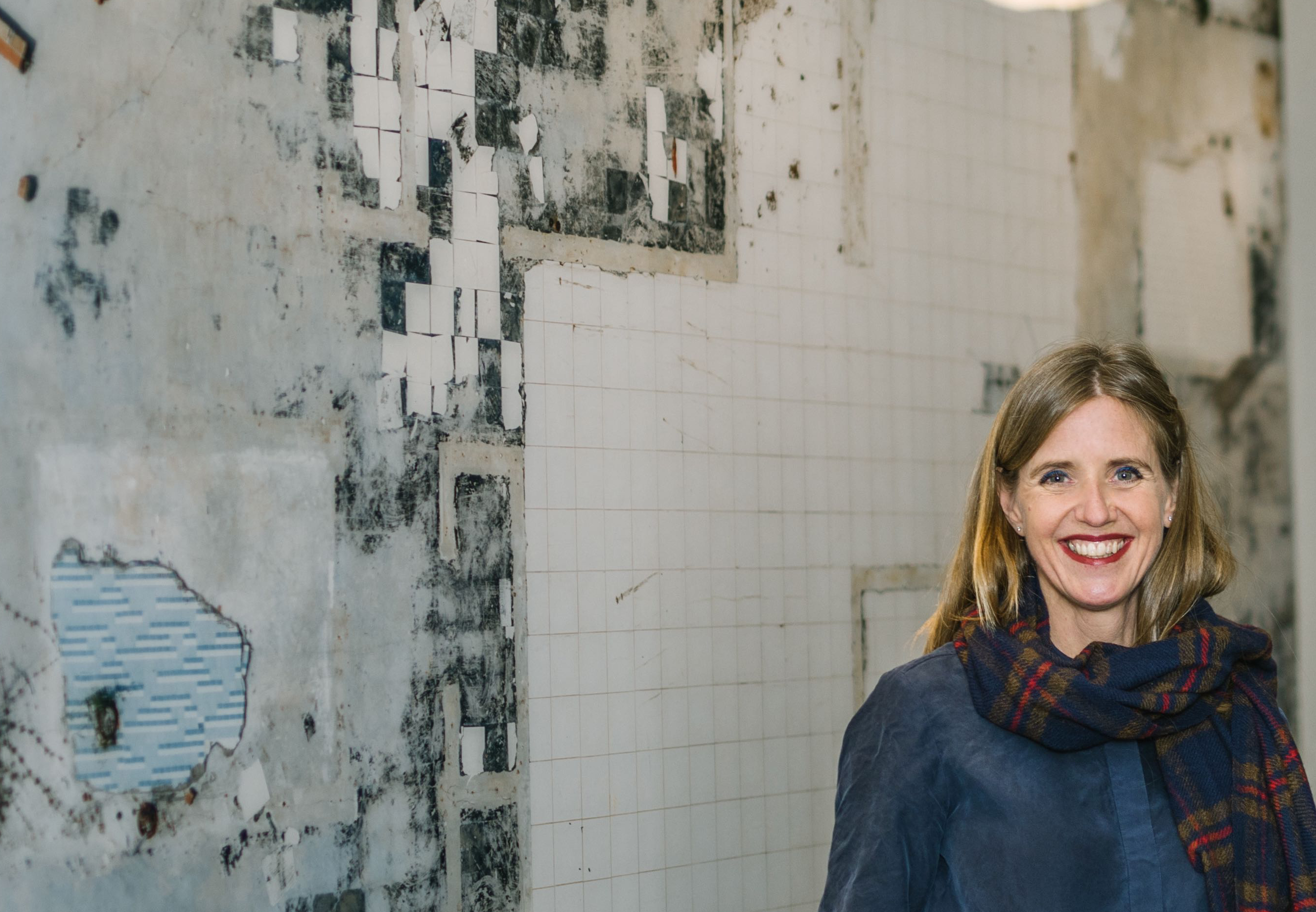art + science communication

Tinni Ernsjöö Rappe, communication manager at Misum, Stockholm School of Economics, in front of “Pirate Lane” by Clay Ketter, 2007, at SSE. After Hurricane Katrina Clay Ketter decided to go to the site of the disaster accompanied by photographer Nils Bergendal. They found entire neighbourhoods demolished. The outlines was then photographed as an abstract, abstruse document of the violence of the weather and the interdependency between human beings and the forces of nature. Photo: Juliana Wiklund
Tinni Ernsjöö Rappe finds art a useful tool to widen the discussions around the the research done at Misum. Misum is a multi-disciplinary group at SSE of circa 28 researchers doing research on sustainable finance and sustainable markets.
Why is Misum working with art and SSE Art Initiative?
We live in a complex and uncertain world, where people are worried about the future. Creating possibilities to meet around questions and solutions regarding sustainability is crucial. We need alot of discussions about creating a resilient world.
Gathering around art is one way of doing it. Artists have long been concerned with issues of sustainability. Art and aesthetics open both our eyes and our feelings to important issues. A rational debate can be triggered by an aesthetic statement and art is therefore important to sensitize us.
For such reasons Stockholm School of Economics has embarked on a great art initiative, based on learning through and about art. This gives us a unique opportunity to share and refine the knowledge of Misum researchers in new ways, artistically, and to a wider audience.
Misum is a place full of people who are knowledgeable and fully committed to creating a better future, both socially and environmentally. That’s fantastic! One part of my job is to put them in the same room as people from different sectors, so we can learn and think together – and generate different ideas. A common art experience can be a platform for such constructive exchange.
The fact that art often is complex in itself makes it even more suitable for the complex topic of sustainability.
It´s also important for us to invite new crowds to SSE. The school is traditionally seen as quite a closed space and we want to change that. It´s a matter of democracy: who is getting knowledge and information, and who takes part in the discussions.
How has Misum worked with art so far?
Misum is of course aware of artists long lasting engagement with environmental issues. It was natural for Dr Lin Lerpold, our first executive director, to participate as keynote speaker in a seminar with the artist Olafur Eliasson at Moderna Museet about the connection between economy, art and sustainability. The queue to get in was around the corner. SSE/Misum also, with KTH and Stockholm Resilience Center, got a donation from Moderna Museet: a website called “Acclimatize”, full of art on the climate issue. We also took part in a debate at the Stockholm house of culture with the Vienna based Thyssen Bornemitza foundation around art projects for social sustainability, and we arrange art talks for students, staff and others about different works.
When Misum last year hosted a big seminar on sustainable consumption, we asked street artist Patrik Qvist to comment. The morning of the seminar, students and visitors met a large phrase built outside the school: “Level up to a poetic economy”. That created some great discussions – not least with Stockholm city who owns the land outside the school …
In November 2017 we took part in an installation called “The People Behind The Financial System” about financial markets at Konsthall C, created by the London-based artist duo “They are here now”.
Another example of how we use art on a daily basis is the SSE art collection that we often show to visitors. It always sparks good questions.
Do you have any dream collaborations regarding art and sustainability?
Imagine having Pedro Reyes, with his grasshopper whopper, doing a talk in the Aula with researchers specialized in food and sustainability. And how about having Olafur Eliason’s Weather project in the Atrium? Naziha Mestaoui is also more than welcome to project a Virtual Forest on the school. Artists, unbound by old academic paradigms, might help us facilitate new ways to engage both in society and corporations.
